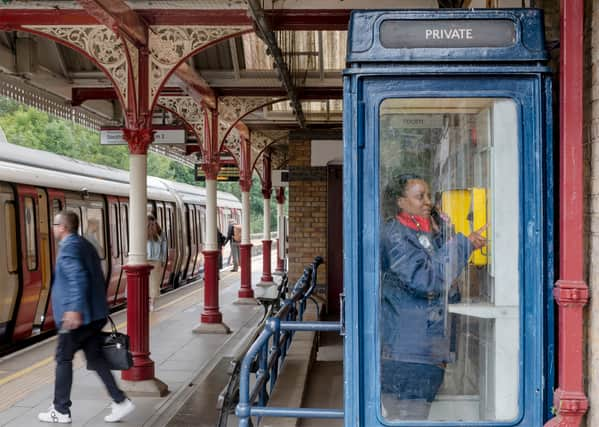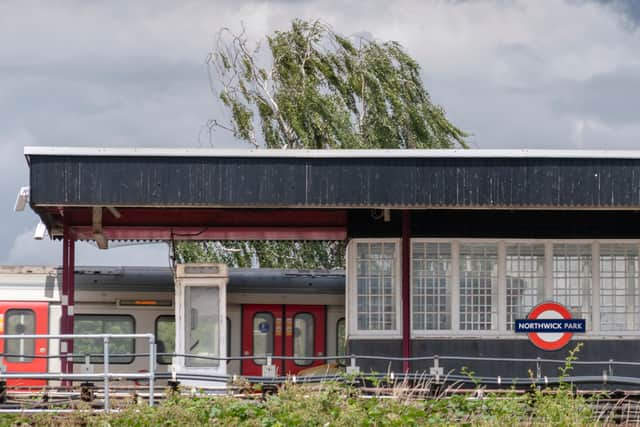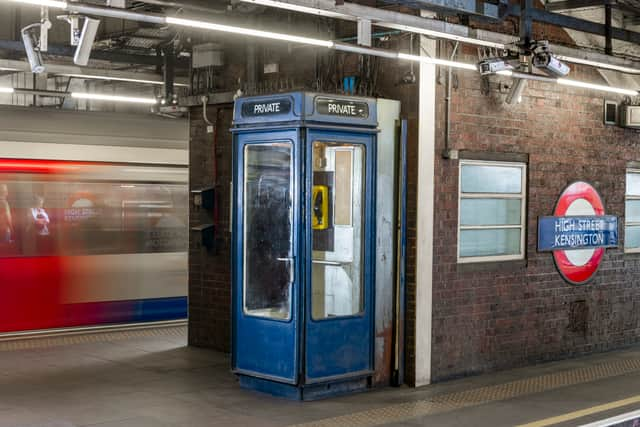What do these different colour phone boxes on London Underground mean? Four K8 kiosks are now Grade II listed


We all know about the nation's iconic red phone boxes - thousands of which are still standing today even though their use is dwindling. While not as common, the eagled-eyed may have also spotted these particular pieces of street furniture in other colours such as blue, maroon, and even white, but what is the purpose of the colour variation?
Four rare K8 phone boxes on the London Underground have recently been awarded Grade II listings with the Department for Culture, Media and Sport taking this step based on the kiosk's historical importance.
Advertisement
Hide AdAdvertisement
Hide AdThe phone boxes are located on station platforms at High Street Kensington, Chalfont and Latimer, Chorleywood, and Northwick Park.
They were designed in 1965-66 by architect Bruce Martin and commissioned by the General Post Office - which owned England's public telephone network at the time.


The design choice here is also much more minimalist and modern in comparison to the glass K2 and K6 phone boxes we see all over the country.
What were the K8 phone boxes used for?
The K8 kiosk is the last generation of what is now regarded as the classic public telephone box. From 1968 to 1983, 11,000 K8s were installed across the UK.
Advertisement
Hide AdAdvertisement
Hide AdHowever, only around 50 remain in their original positions as most of them were removed by British Telecom when it was privatised in 1984.
They were replaced by the KX100 kiosk, which was eventually all but made obsolete by mobile phones.
Most of the remaining K8s are in Hull as they were part of an independent network, rather than the property of British Telecom.
In similar fashion, the tube station phone boxes have survived as they were owned by London Underground and housed an internal telephone system for station staff.
Advertisement
Hide AdAdvertisement
Hide AdLord Parkinson of Whitley Bay, Arts and Heritage Minister, said: “This distinctive telephone box design, once a ubiquitous part of daily life in the UK, is now rare to see in our public spaces.
"I am delighted these remaining examples have been listed so that their design can continue to be admired and enjoyed for years to come.”
Why were they painted different colours?
To avoid confusion with phone boxes available for public use, each of the K8 kiosks were painted in different colours to the traditional red. The K8s at High Street Kensington and Chorleywood are blue, the one at Chalfont and Latimer is maroon, and the kiosk at Northwick Park is painted white.


The newly listed boxes join the nine K8 phone boxes in Hull listed earlier this year.
Advertisement
Hide AdAdvertisement
Hide AdTom Foxall, Regional Director for Historic England in London and the South East, said: “There are very few designs that can be genuinely termed as ‘iconic’ but the K8 is certainly one of them.
"Like its predecessors, this kiosk was a defining feature of 20th-century Britain’s physical, technological and cultural landscape. Very few K8s survive, so they certainly need to be cherished and protected.”
The recent protection of 11 K8s are a result of listing applications submitted by dedicated phone box enthusiasts.
Attracted by the boxes crisp design and nostalgia for the pre-digital age, the search for hidden K8s continues.
Advertisement
Hide AdAdvertisement
Hide AdFans share information on forums and make special trips to confirm possible sightings. Historic England will consider listing applications of any unrecorded K8s where suitable evidence is provided to support the case for listing.
Comment Guidelines
National World encourages reader discussion on our stories. User feedback, insights and back-and-forth exchanges add a rich layer of context to reporting. Please review our Community Guidelines before commenting.
